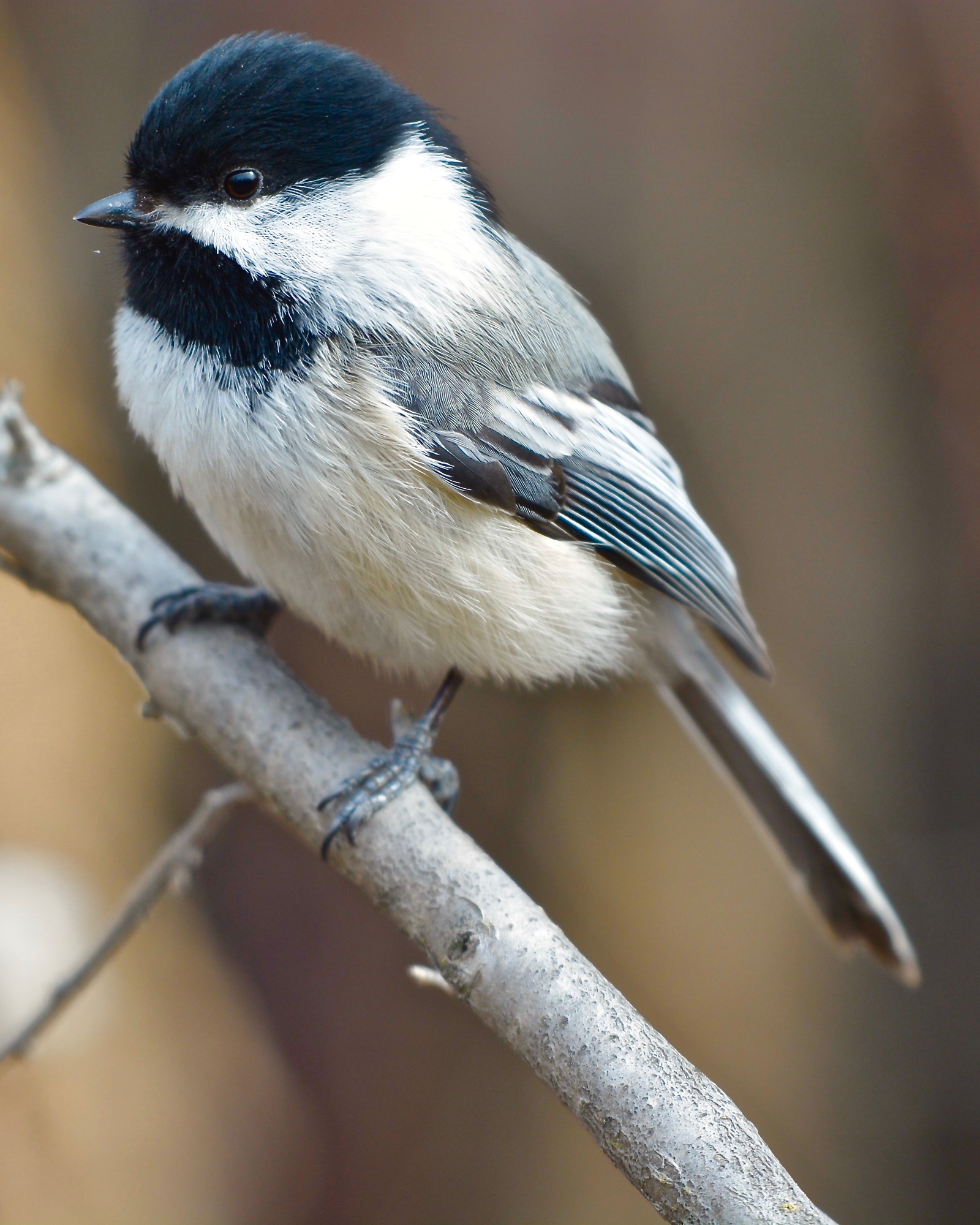By Willow Pawlak
The sight of geese flying southward in v-shaped flocks, sometimes numbering in the hundreds, is a sure sign of autumn. During this season, many species of birds leave the province for warmer regions near the equator, while some land-bound animals prepare for hibernation. Others continue to be seen throughout the winter and although most are well suited to survive even the harshest weather, there are still some ways to help them.
Who can I expect to see during winter?
While most of Alberta’s birds migrate away for the winter, animals like grouse, crows, magpies, chickadees, waxwings, certain sparrows and many owls are year-long residents. Other species, like mallards and Canada geese, take advantage of city cores warmed by exhaust and sunlight reflecting from buildings to enjoy the resultant open water and skip migration. Still others, like snowy owls and gyrfalcons, use Alberta as a mild winter retreat from their tundra homes.

As long as food and shelter are available, it can be advantageous for certain birds to avoid migration. They save energy, can spend more time raising last spring’s chicks and keep their own territories safe from other birds. These species often have adaptations that allow them to stay, such as growing more feathers, flocking up and standing on one foot at a time while the other is warmed under their down. A few are even able to reduce their metabolic rate to save energy, much like hibernators.
What about non-bird animals?

Among other animals, only some bats and certain populations of deer and elk may migrate. Many others stay here, but are unlikely to be seen as they enter a state of hibernation. Their body temperature, heart and breathing rates and metabolism are reduced to allow the animal to sleep for extended periods of time while surviving off body fat acquired during summer and autumn. True hibernators, such as red squirrels and bats sleep so deeply that they almost never wake up until spring. Light-sleep hibernators such as bears, raccoons and skunks occasionally wake up in response to environmental changes, or if they get too hungry. For example, the Calgary Zoo’s bears have made winter appearances during chinooks, when warm air can raise daytime temperatures to 20 degrees in February.
Cold-blooded reptiles and amphibians experience brumation, which is similar to hibernation. To avoid freezing, they move underground or to the bottom of water bodies that are deep enough to not freeze solid. Like light sleep hibernators, its normal for them to wake up during warm periods.
Business as usual
Some wild animals like deer, mountain sheep, coyotes, cougars, rabbits and porcupines continue business as usual throughout the cold months. Fat reserves and thick coats acquired during autumn, as well as a larger overall body size than the same animals in southern regions, help them survive. In particularly harsh winters, deer might form large groups and seek agricultural leftovers as easy-to-access food, but these species are generally good at fending for themselves.

How can we help wildlife in the winter?
In rural areas with plenty of natural space, most animals can get through winter without assistance. If you do wish to help them, creating a brush pile from branches and yard trimmings, and your christmas tree, is a great way to shelter birds and small mammals.7 The same can be done in city backyards, if you have the space.
Songbirds that overwinter in urban spaces can benefit more from human intervention than other groups. Food can be difficult to find in our concrete habitat, and they need a lot of it to stay warm, so bird feeders are incredibly beneficial. Sunflower seeds, suet and mealworms provide the most nutritional value for chickadees, goldfinches, woodpeckers, sparrows and more. Remember to keep the feeder clean to avoid the spread of illness, and place it away from windows and roads to avoid collision risks. If you have a brush pile, it can help attract visitors to the feeder.

Bird baths, bird houses, and feeding wildlife
Providing water in bird baths can also help, but a wire mesh is needed to keep birds out of the water. If even a small part of their body or feathers gets wet, the risk of them freezing is high. A mesh over the bath allows them to drink without diving or falling in.
Birdhouses or even simple windbreaks can keep flocks warm. It’s best to clear old nesting material out of birdhouses to allow the most adults to comfortably fit inside.
Ducks and geese often hang around because they’ve learned that people will feed them. However, this can cause them to become dependent on humans for food and lose their natural fear of us. In addition, many human foods are unhealthy for them. Depending on the species, they’ll find food in aquatic plants, minnows, aquatic invertebrates, agricultural leftovers and even bird feeder leftovers that have fallen to the ground. If you can’t resist feeding them, birdseed is the most suitable option.
Even in winter, Alberta has much to offer by way of wildlife viewing! If you find any wildlife that may be in distress, contact AIWC’s hotline at 403-946-2361.
References
- Calgary winter bird list, 2021. [accessed 2021 Sept 20]. https://albertawinterbirds.org/showlist.php?area=YYC.
- Salt, WR, Wilk, AL. The birds of Alberta. Edmonton (AB): Department of Economic Affairs; 1958.
- Sears, E. Caring for wild birds in the winter. [blog]. Canadian Wildlife Federation Blog. [accessed 2021 Sept 19]. https://blog.cwf-fcf.org/index.php/en/winter-bird-feeding-tips/.
- McMahon, M. There’s more to hibernation than you think. [blog]. Forest Preserve District Will County. [accessed 2021 Sept 19]. https://www.reconnectwithnature.org/news-events/big-features/more-to-hibernation-than-you-think.
- The Calgary Zoo. Facebook [timeline, user post]. 2020 Jan 22. [accessed 2021 Sept 19]. https://m.facebook.com/thecalgaryzoo/photos/a.10150164186815193/10163186336970193/?type=3&eid=ARCMT7geaHLjNSgo2RGM4ww2D7a0Fihf2Y1Ttyk3XkEAW1XxCiKoH83vU2O17Ce62cTNR3O6aZPYl7m8.
- Carpenter, T. How whitetails weather the brutal winter conditions. [blog]. Deer & Deer Hunting. [accessed 2021 Sept 19]. https://www.deeranddeerhunting.com/deer-scouting/deer-behavior/how-whitetails-weather-the-brutal-winter-conditions.
- Bradford, J. Help wildlife survive winter. [blog]. Canadian Wildlife Federation. [accessed 2021 Sept 19]. https://cwf-fcf.org/en/resources/DIY/outside/help-wildlife-survive-winter.html.
- Canadian Wildlife Federation. Can I feed ducks bread? [blog]. Canadian Wildlife Federation. [accessed 2021 Sept 19]. https://cwf-fcf.org/en/about-cwf/faq/faqs/can-i-feed-ducks-bread.html.






